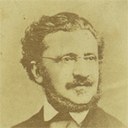0070 Szathmári, un mare artist documentarist
Identifiers (Article)
Identifiers (Files)
Abstract
(For full version in English see RIHA Journal 0079)
Carol Pop de Szathmari was born in Cluj, Transylvania, on 11 January 1812. His talent for painting shone out from an early age. Being a passionate traveller, Szathmari journeyed through Europe and often crossed the Carpathian Mountains to visit Wallachia and its capital Bucharest, where he eventually settled in 1843. An accomplished landscape and portrait painter, at ease with both watercolours and oil paints, Szathmari obtained commissions from the wealthy Wallachian boyars. Szathmari kept up constant, good relations with the successive ruling princes of Wallachia for whom he painted portraits and various other compositions. By 1848, Szathmari began to experiment with photography. The outbreak of the Russian-Ottoman War in late June 1853 saw the Romanian principalities occupied by the Russian army. In April 1854, Szathmari filled a van with his cameras and glass plates and went to the border of the Danube to document the fighting between the Russian and Turkish armies. The result of Szathmari's bravery and hard work was a photographic album. His album, containing some two hundred images, became famous due to its presentation at the 1855 Paris World Exhibition and Szathmari was awarded the Second Class Medal for his work. From that time on, photography, painting and lithography were always closely connected in Szathmari's career. In 1864 he became member of the Société Française de Photographie in Paris and in 1870 of the one in Vienna. In 1863, he received the title of Ruling Prince's Court Painter and Photographer which he kept for the rest of his life. The official painter followed his patron, Prince Carol I, on the battlefield during the Russian-Romanian-Ottoman War of 1877, which was waged south of the Danube. Along martial compositions and albums, Szathmari had long been attracted by folk types and produced a large series of pictures with peasants, gypsies, postillions, merchants and artisans. He toured the fairs and the crowded streets of the town in search of picturesque types. The artist's last major work was the chromolithographic album of the symbolic carts which paraded the Capital city on 10-11 May 1881, King Carol's coronation pageant. Szathmari died in Bucharest 3 June 1887.
Statistics


License

This work is licensed under a Creative Commons Attribution-NonCommercial-NoDerivatives 4.0 International License.



